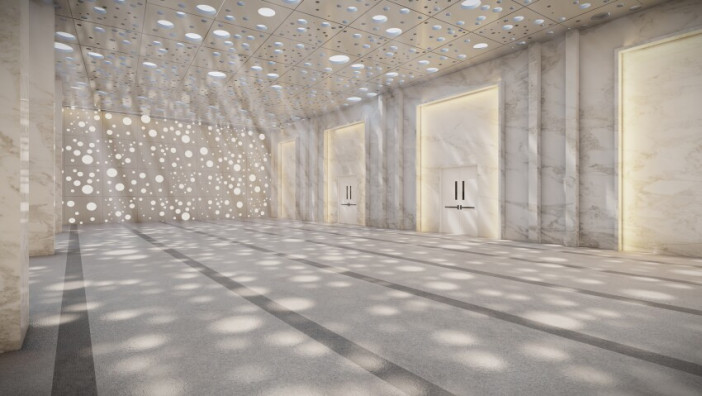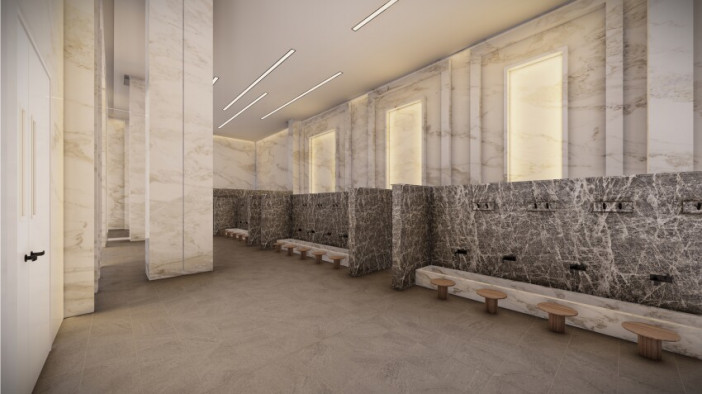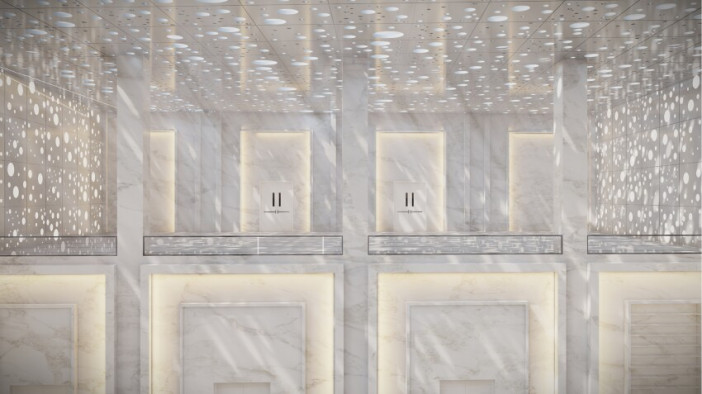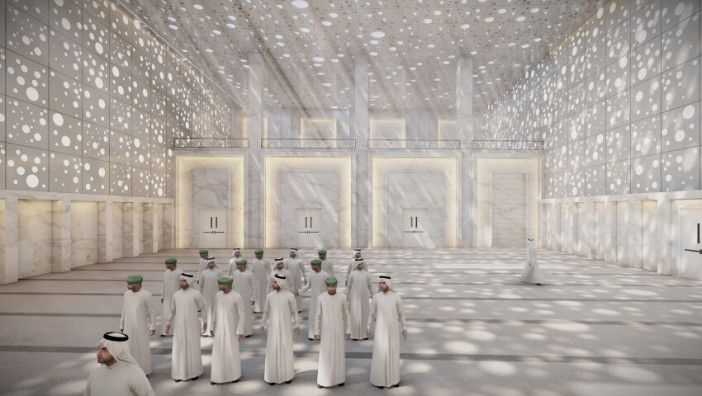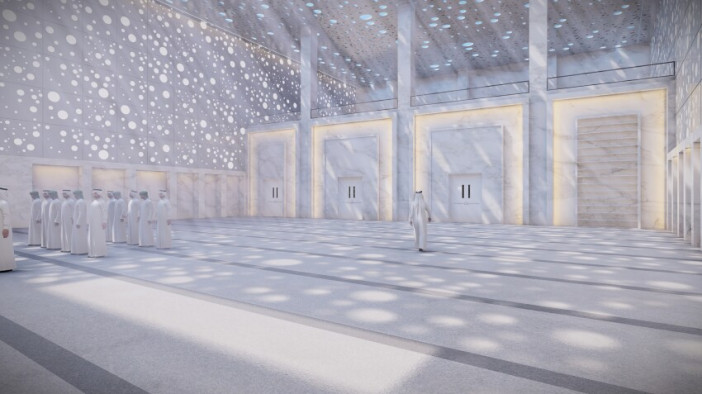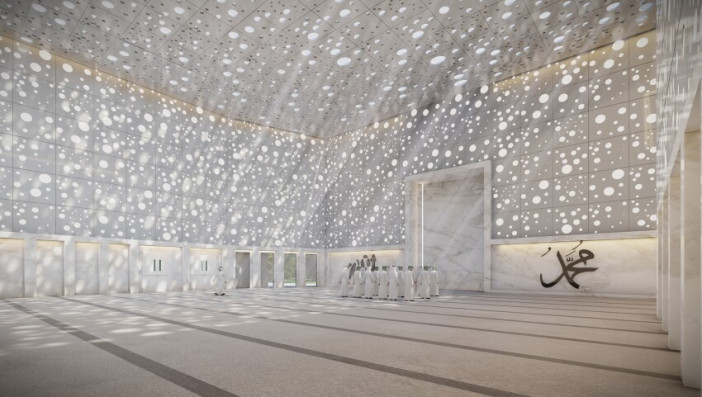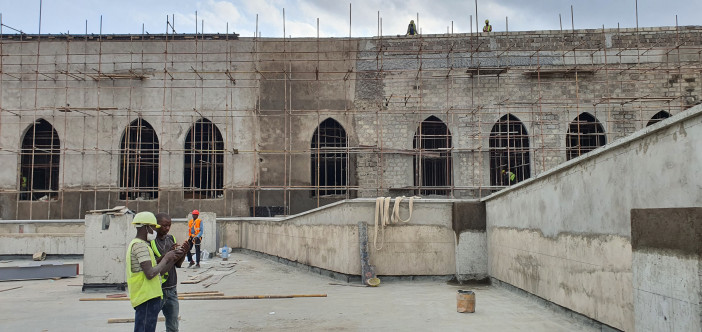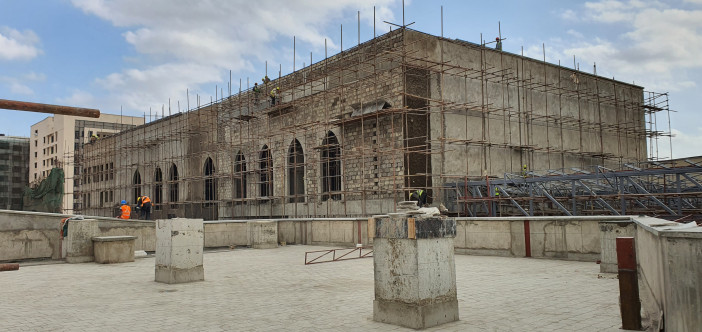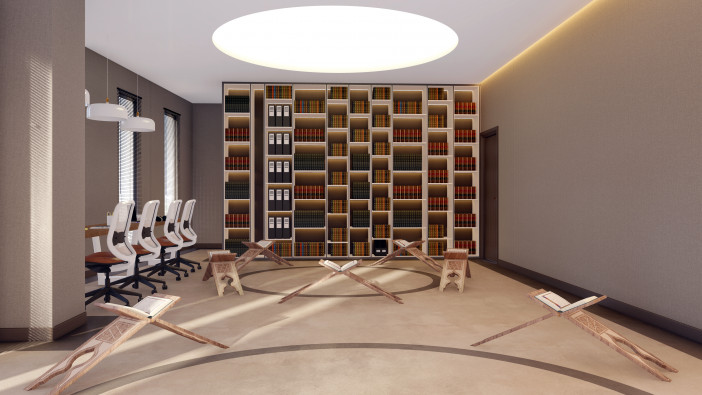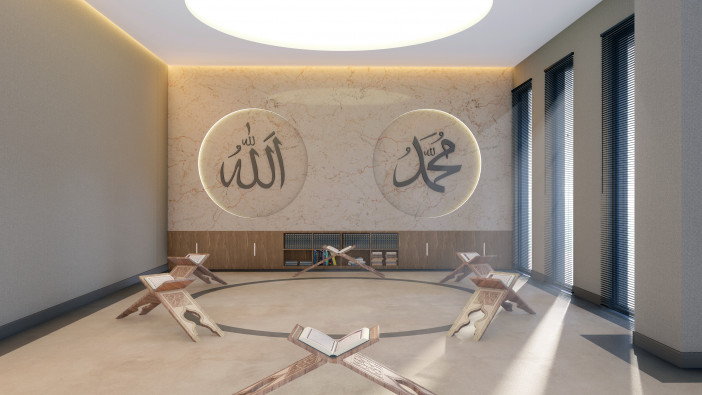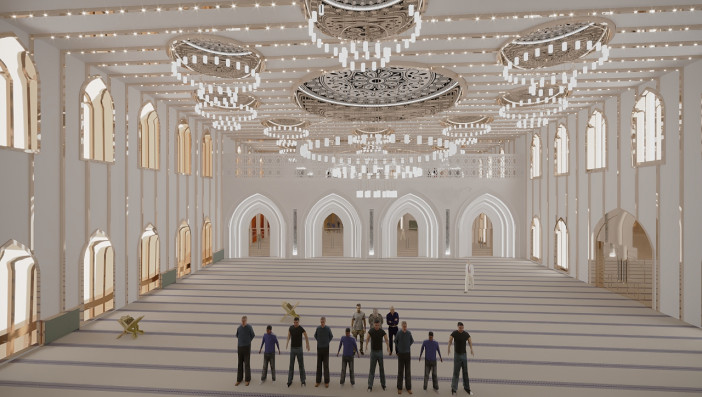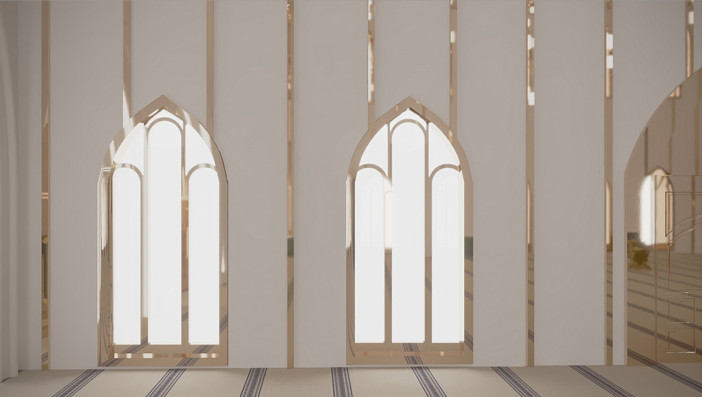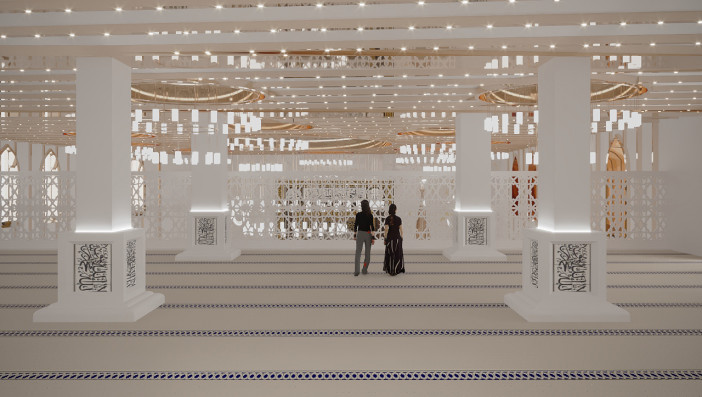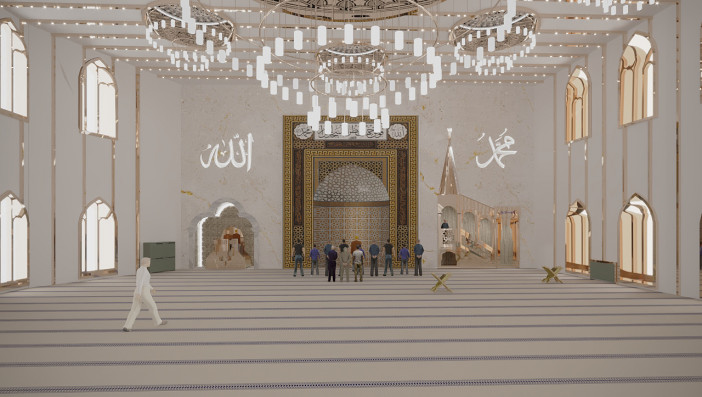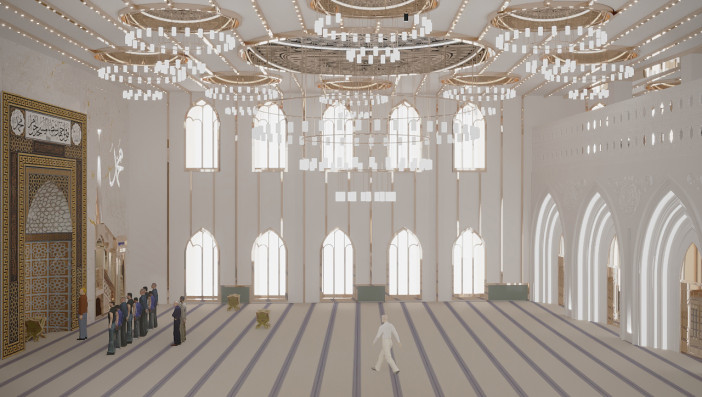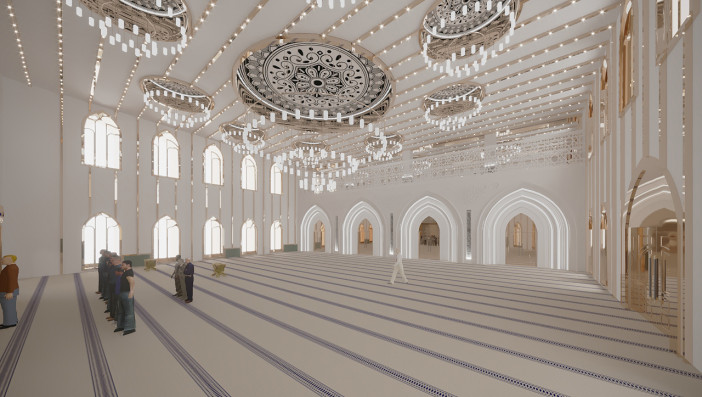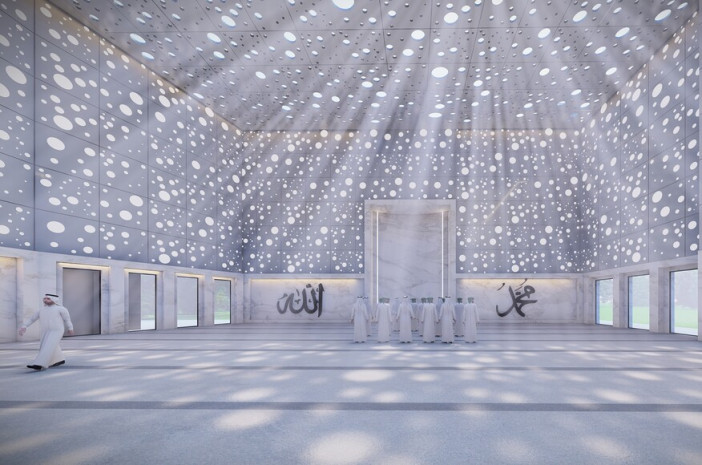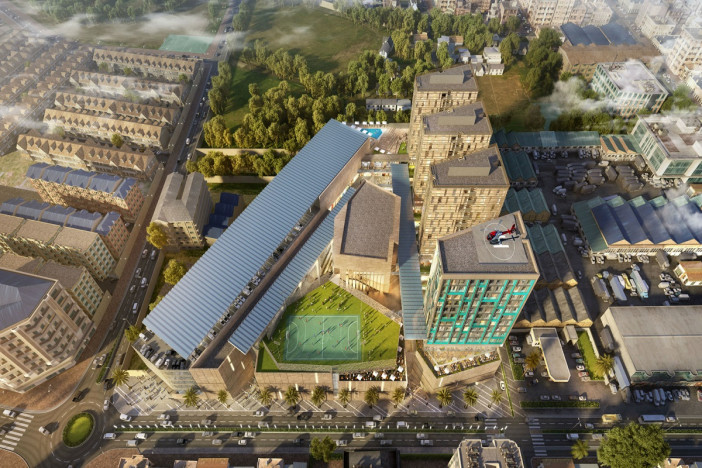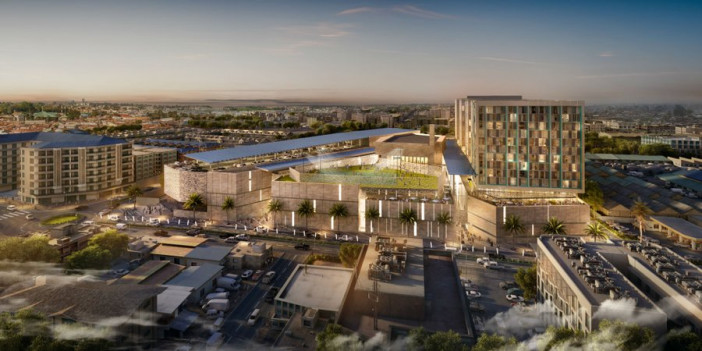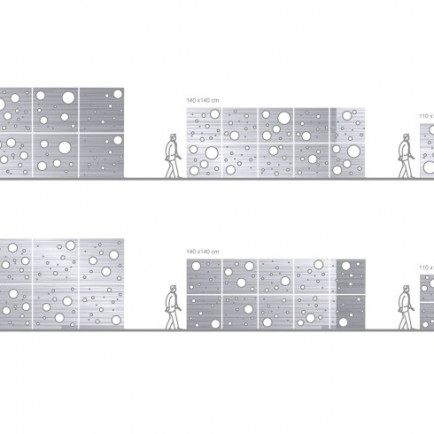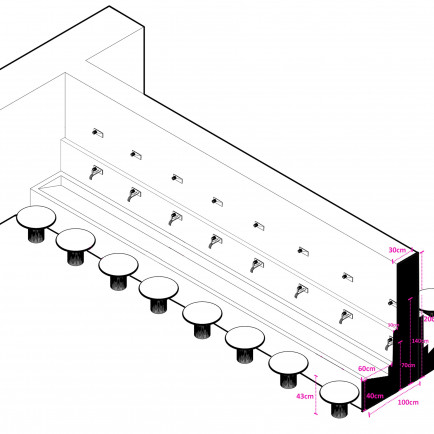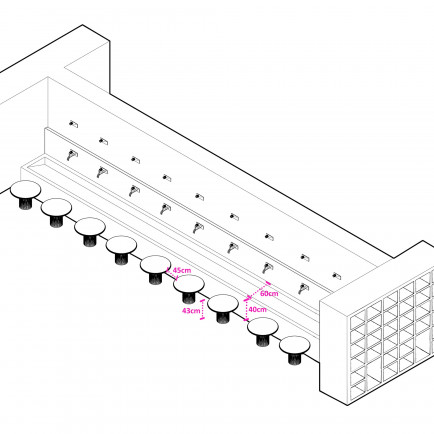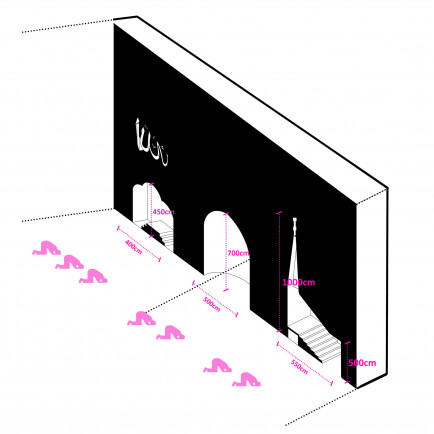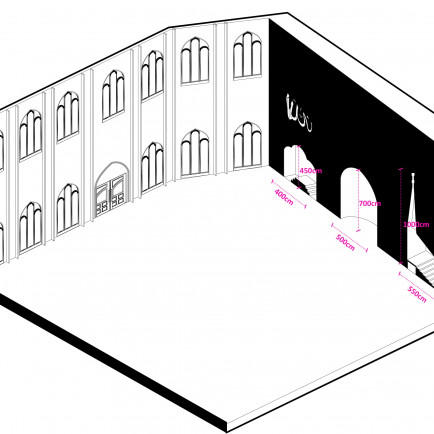Mosque of BBS Mall
History
Nairobi, the capital of Kenya, an East African nation, is where the project is situated. With a 130 000 m2 area, BBS Mall is a potential contender for the title of largest mall in East Africa. BBS Mall, which has a lot of space for commerce, also has a mosque inside of it.
Urban and Architectural
There is a scenario where daylight is received via windows between geometric spaces in classical Islamic architecture. These window spaces' architectural components are known as masrebiyye. By using masrebiyyas to shred the light, it is brought into the mosque. The light is geometrically divided up and let into the mosque as light rays of various proportions, which is one of the most basic aspects of Islamic mosque architecture. As a fresh interpretation of this, this mosque uses rounded gaps of various sizes to let light into the room. The mosque's walls and roof function as a masrebiyye. This is an example of how the masrebiyya culture in traditional Islamic architecture has been utilized and given a modern interpretation.
The 15 m main mosque space is given a human scale by the marble level rising to that of a person. Aluminum panels with LED lights emanating from the rounded voids generated in these panels were designed after this marble area rose to human height. Every moment spent in prayer is an opportunity to reflect on life once more and to take stock of one's actions by questioning oneself in front of Allah. These circular lights stand in for the improvements that prayer will make to the human soul and life.
Four pointed arches make up the facade of the entrance. Each door's arches accentuate the entrance by stumbling into one another.
Around a central circle on the ceiling, 8 circular chambers have been created. In Islamic theology, 8 spaces correspond to 8 separate entrances to paradise. The main space and the eight spaces around it also show the locations of the chandeliers in the ceiling lighting.
The imam's prayer niche has been planned out and highlighted on the Qibla wall. The qibla wall was used in the design of the preaching course and the pulpit (minbar). In particular, the division in the space where prayers are said has been removed by designing the pulpit (minbar) inside the wall.
Description
High windows on the side walls let in daylight. A connection between the wall and the ceiling is made by unear hardwood studs that go from the side walls to the ceiling.
The interaction between the linear lights and the inside wall and ceiling has been attempted to be continued in the ablution area. The imam flat is also created as a part of the project.
Details
الموقع
Britam Tower 7th floor Eastern Wing Hospital Road, UpperHill, Nairobi, Kenya P.O. Box 77810-0622 Nairobi, Kenya
عدد المصليين
250
المالك / المتبرع
Business Bay Square (BBS)
المعماري
تاريخ البناء
2021
Area
500
الرسومات المعمارية
الخريطة
History
Nairobi, the capital of Kenya, an East African nation, is where the project is situated. With a 130 000 m2 area, BBS Mall is a potential contender for the title of largest mall in East Africa. BBS Mall, which has a lot of space for commerce, also has a mosque inside of it.
Urban and Architectural
There is a scenario where daylight is received via windows between geometric spaces in classical Islamic architecture. These window spaces' architectural components are known as masrebiyye. By using masrebiyyas to shred the light, it is brought into the mosque. The light is geometrically divided up and let into the mosque as light rays of various proportions, which is one of the most basic aspects of Islamic mosque architecture. As a fresh interpretation of this, this mosque uses rounded gaps of various sizes to let light into the room. The mosque's walls and roof function as a masrebiyye. This is an example of how the masrebiyya culture in traditional Islamic architecture has been utilized and given a modern interpretation.
The 15 m main mosque space is given a human scale by the marble level rising to that of a person. Aluminum panels with LED lights emanating from the rounded voids generated in these panels were designed after this marble area rose to human height. Every moment spent in prayer is an opportunity to reflect on life once more and to take stock of one's actions by questioning oneself in front of Allah. These circular lights stand in for the improvements that prayer will make to the human soul and life.
Four pointed arches make up the facade of the entrance. Each door's arches accentuate the entrance by stumbling into one another.
Around a central circle on the ceiling, 8 circular chambers have been created. In Islamic theology, 8 spaces correspond to 8 separate entrances to paradise. The main space and the eight spaces around it also show the locations of the chandeliers in the ceiling lighting.
The imam's prayer niche has been planned out and highlighted on the Qibla wall. The qibla wall was used in the design of the preaching course and the pulpit (minbar). In particular, the division in the space where prayers are said has been removed by designing the pulpit (minbar) inside the wall.
Description
High windows on the side walls let in daylight. A connection between the wall and the ceiling is made by unear hardwood studs that go from the side walls to the ceiling.
The interaction between the linear lights and the inside wall and ceiling has been attempted to be continued in the ablution area. The imam flat is also created as a part of the project.


